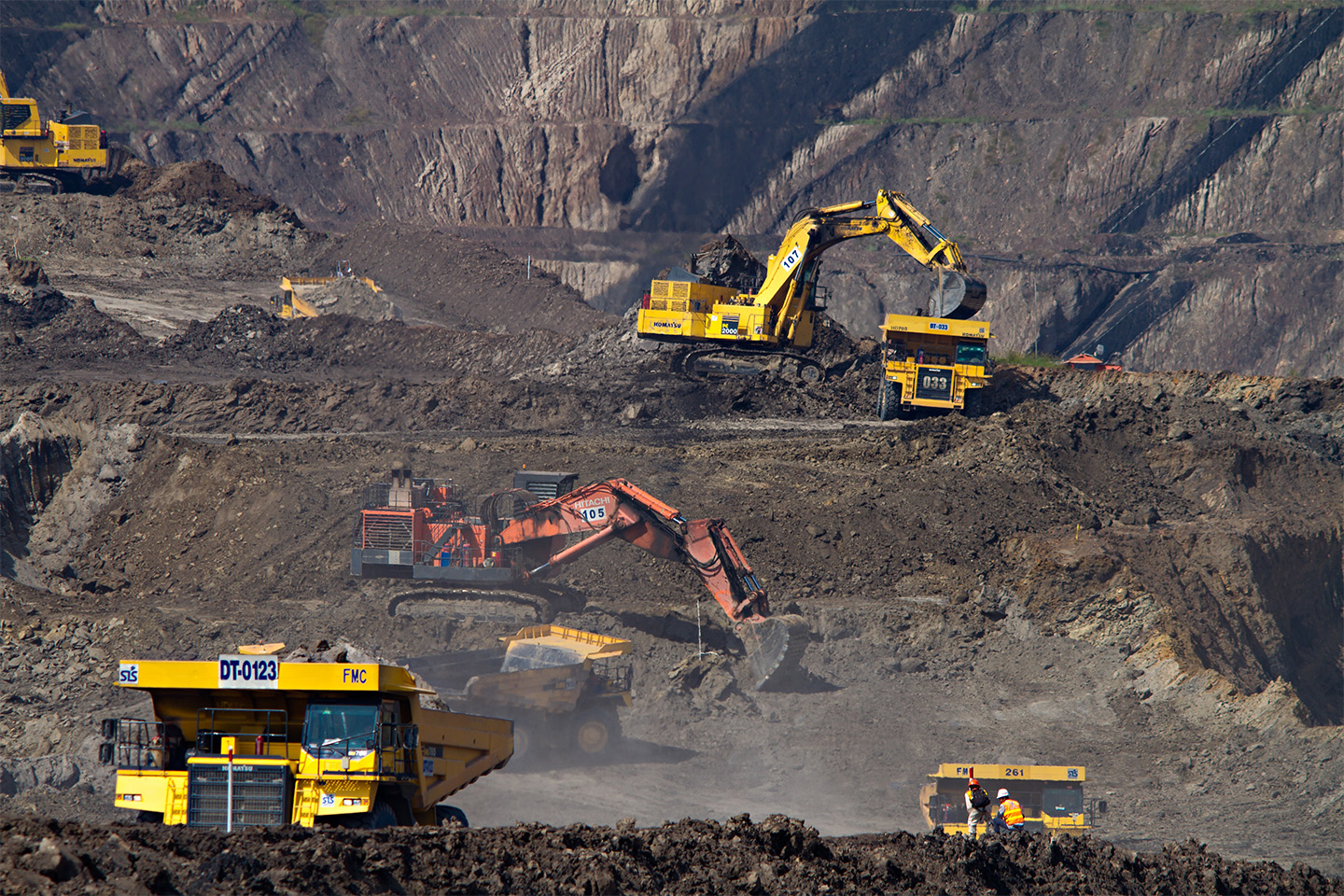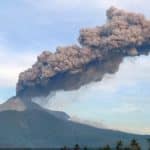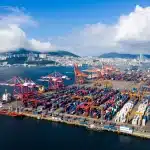Liga Asuransi – Dear readers, how are you? Hopefully, your business will run smoothly in 2023 and move forward as planned.
Risk management is one of the essential factors that need to be considered by every business owner. But unfortunately, not all entrepreneurs pay special attention to this.
As an insurance broker and insurance consultant with over 30 years of experience, we see that almost every day, accidents occur in various types of industries, including mining. Accidents happen in factories or enterprises with a good risk management program.
Based on our experiences, the statement “Risks can occur anytime, anywhere, and against anyone” is true.
When an accident occurs, the value of loss can be enormous, up to a million dollars. Much larger than they expected.
This is where the role of insurance coverage is essential. Insurance can help to overcome financial difficulties that suddenly arise caused by accidents so that companies can solve the problems and return to operating like before the accident as soon as possible.
Like our previous article, this time, we want to discuss risk management and insurance in the bauxite industry, one of the mineral resources that is the main export of Indonesia.
If you are interested in this article, please share it with your friends so that they understand as you do.
Indonesia’s Bauxite Potentials
As you might know, the Riau Islands Energy and Mineral Resources Agency (DESDM in 2011) noted that the number of bauxite mining companies that have mining licenses (IUP) in this region is 32 companies.
3 IUP in Karimun, 12 IUPs in Tanjung Pinang, Bintan, 9 IUPs, and two companies are on the district border. The total area controlled by IUP holders is estimated at 34,993 ha; 1.64% of the area is in Karimun, Lingga (93.36%), Tanjung Pinang (1.61%), Bintan (2.33%) and 1.06% is on the border of the two regions.
The amount of bauxite resources in the Riau Islands is estimated at 180.97 million tons; the area still stores the largest bauxite resources is Lingga Regency, with the remaining 168.96 million tons spread across four regions with a relatively small number.
In West Kalimantan, 49 companies have IUP with a total area controlled by around 557,259 Ha, 27 companies are in Sanggau with an area of 247,338 Ha, in Bengkayang there are 2 companies with an area of 9,500 Ha, Porcupine as many as 8 companies (57,217 Ha), North Kayong 5 companies (9,985 Ha), Pontianak Regency 3 companies (35,250 Ha) and at the border between regencies/cities as many as 4 companies (197,970 Ha).
The amount of bauxite resources in this region is estimated to be quite large, namely around 3.29 billion tons, Sanggau and the location in the border area of the two districts are the areas with the largest bauxite resources of 1.28 billion tons and 1.02 billion tons, respectively. The validity period of the IUP ranges from 2 to 20 years.
In general, Indonesia is ranked number 5 in the world as the country with the largest reserves of bauxite deposits.
Please read this article for a detailed explanation of risk management and insurance for the bauxite industry.
If you are interested in this writing, please share it with your colleagues, so they also understand like you.
Accidents in the Bauxite Mining Industry
In the last few years, there have been several accidents in bauxite mines in various parts of the world. Here we write down some of the casualties among them.
Bauxite trains operated by Russia’s Rusal collide in Guinea, killing one.
- Bauxite Train Accident
CONAKRY, Sept 20 (Reuters) – Two trains operated by Russian aluminum giant Rusal (RUAL.MM) collided in Guinea’s capital Conakry on Monday, killing at least one person and injuring several others, according to witness accounts and footage on social media.
- Bauxite train derailment in St Ann, Jamaica, kills two
On November 20, 2022, at St Ann, Jamaica, police reported that two people were found deceased following a bauxite train derailment. On Monday, a thick pall of sadness hung in the air as co-workers of two men killed in a train crash on Sunday night struggled to cope.
- Brazil bauxite mine accident leaves 5,000 homeless
RIO DE JANEIRO, Jan 10 (Reuters) – Heavy rains caused a bauxite mine’s rejects dam in the Brazilian state of Minas Gerais to burst and drive 5,000 people from their homes, Brazil’s CBN radio station said on Wednesday.
Dozens of people have died, and more than 8,000 have been left homeless in southeast Brazil in the past weeks due to mudslides and flooding from heavy rains.
Bauxite Mining Process
Bauxite is the principal ore of alumina (Al2O3), which is used to produce aluminum (Al).
It comprises hydrated aluminum oxides, hydrated aluminosilicates, iron oxides, hydrated iron oxides, titanium oxide, and silica. It contains various minerals such as gibbsite, boehmite, hematite, goethite, Al-goethite, anatase, rutile, ilmenite, kaolin, and quartz.
Bauxite is a residual rock formed from weathering various igneous, sedimentary, and metamorphic rocks.
These rocks have been exposed to long periods (millions of years) of weathering under tropical, subtropical, or very wet temperate conditions.
Ninety percent of the known world bauxite resources are in tropical locations. Other deposits outside these latitudes have been exposed to long periods of intense weathering in their geologic past.
The most significant concentrations of bauxite are in Central and South America, West Africa, Guinea, India, Vietnam, Indonesia, and Australia. Some deposits also exist in the north of Russia and the center of Saudi Arabia.
Usually, bauxite occurs near the surface. Nevertheless, there are buried bauxite deposits in which other materials have covered the bauxite post-formation.
The current estimated global bauxite resource is more than 70 billion tonnes. Of this, the greatest concentration is in Guinea, where there are well-proven resources of approximately 25 billion tonnes.
Most bauxite occurs close to the surface, with only 1 or 2 m of overburden. Typical deposits range in thickness from 3 to 15 m. Most of the bauxite can be mined and processed without beneficiation (further treatment of the ore to concentrate the minerals). Still, the ore in the north of Brazil and Vietnam has a high clay content and has to be washed before processing.
There are some underground deposits; however, these are often linked to a surface occurrence, where the terrain that has helped form the bauxite has tilted, so the ore found at the surface gradually gets deeper. Underground mining is needed to extract this material economically.
Many areas in China have underground bauxite depths from 200 to 300 m.
The typical processes involved in the mining of surface deposits are as follows:
- Blasting or ripping off some parts of the ore that cannot be dug easily. This involves drilling and placing explosives or ripping with giant bulldozers.
- Clearing of vegetation and collection of valuable topsoil using scrapers and bulldozers.
- Crushing and sorting.
- Delivery to export or local refineries.
- If necessary, wash and beneficiation (further treatment of the ore to concentrate the minerals).
- Landscaping and rehabilitating back to the existing land use in collaboration with the local people and government.
- Loading onto trucks and hauling to a crushing facility. Trucks ranging in size from 30 to 180 tonnes are used in different sizes of mines.
- Removal of overburden.
It is estimated that around 165 million tonnes of bauxite are mined annually.
Bauxite is generally transported to refineries by conveyor, rail, or ship. Some alumina refineries are located close to their bauxite mines. Bauxite mines typically employ 500 to 1000 people.
Equipment Used for Bauxite Mining
variety of custom equipment and process solutions for the processing of bauxite. From processing bauxite for use in aluminum production, refractory, or proppants, we can develop a process solution that fits your needs and engineer and manufacture the equipment needed.
Material Processing
Pelletizing
Pelletizing equipment consists of disc pelletizers, pin mixers, pug mills (paddle mixers), and complete bauxite pelletizing systems.
Thermal Processing
Thermal Processing consists of rotary dryers for drying bauxite and rotary kilns for bauxite sintering applications.
Bulk Material Handling
A comprehensive line of bulk material handling equipment for bauxite handling needs. Including custom bucket elevators, belt conveyors, reversing shuttle conveyors, and steep incline conveyors, along with pieces to increase the flexibility of your handling system, such as belt trippers, plows, and belt feeders.
Process Testing and Design
A testing facility where a test material at both batch and pilot scales to work out process variables, design commercial-scale units, and scale up the process.
- Proof of Product: A more in-depth batch testing phase in which more time is spent determining whether a product can be made to desired specifications.
- Proof of Process: A continuous testing phase establishes the equipment setup and parameters required to produce specific materials constantly.
- Process/Product Optimization: An in-depth study to optimize your specific material’s characteristics and production parameters in an industrial setting.
The potential Risks of the Mining Production Process
Almost the entire bauxite production process faces risks. Starting from soil and sand mining to shipping bauxite to customers.
Here are the potential risks that can occur:
- At the time of mining.
Heavy equipment accidents such as excavators, dozers, loaders, and others. These tools can be overturned, collisions, entrance holes, landslides, floods, hurricanes, earth thunderstorms, and others.
- Transportation of Raw Materials and Finished Materials
While transporting, raw materials can be lost and damaged due to accidents on the highway due to overturned or collided trucks. Bauxite materials can also be damaged and lost due to accidents when transported using trains or conveyor belts. The most common is damage and loss when there is an accident on a transport ship, such as a tug boat or other types of vessels.
- Accident at Bauxite at the Processing Plant
We are all aware that the investment in the bauxite management plant (semester) is enormous, reaching hundreds of millions of US dollars.
Smelters can suffer damage and loss due to fire, explosion, lightning, etc. Smelters also face risks due to natural disasters such as floods, water damage, landslides, hurricanes, storms, earthquakes, tsunamis, fiery Gurung eruptions, and others.
- Engine and Power Plant Malfunctions
Machines, including smelters and boilers as the primary means for the processing process, are prone to the risk of mechanical and electrical damage due to operation.
- Lawsuits From Third Parties
Due to the vast mining activity in a vast area, the potential to cause damage to the surrounding community environment is significant. This can happen due to errors and omissions in the company’s operations. If this happens, it can cause the company to face vast demand.
- Work Accidents
Work accidents to heavy equipment operators, employees, and supervisors have enormous potential. This is almost the same as the potential risk to other mines.
In addition to paying particular attention to all safety facilities, the company must provide health insurance and accident compensation.
Type of Insurance Needed by Bauxite Mining and Plant
The company must have full insurance coverage to have comprehensive insurance protection for the bauxite mining and processing plant. Below are the types of insurance needed:
- Motor Vehicle insurance (road-used vehicles)
- Heavy Equipment Insurance (Mining equipment including dump trucks)
- Property All Risks Insurance (mining plants such conveyor, crushing plant, processing plants)
- Public Liability Insurance – Legally liability from the third party due to error and omissions
- Marine Cargo Insurance – Loss or damage during transportation (land and sea)
- Accident and Health Insurance
- Others
How to get Bauxite Mining Insurance in Indonesia?
Arranging insurance for the bauxite mining industry in Indonesia takes extraordinary effort. This type of industry is a high risks business. Only a few insurance companies can cover it.
The best way to arrange insurance for bauxite mining is by using the service of an experienced insurance broker.
An insurance broker is the insurance expert that works on your behalf. The broker will design insurance programs that meet the characteristic of your business. Brokers will approach insurance companies in local and international insurance markets.
At the same time, brokers also negotiate the insurance premium cost to as minimum as possible to meet your budget.
One of Indonesia’s insurance brokers with experience in the mining industry is L&G Insurance Broker.
For all your insurance needs, please call L&G now!
Sources:
- https://en.wikipedia.org/wiki/Bauxite
- https://bauxite.world-aluminium.org/mining/process/
- https://www.mining-technology.com/projects/cbg-bauxite/
- https://www.reuters.com/article/idUSN10282358
- https://www.alcircle.com/news/bauxite-train-derailment-in-st-ann-jamaica-kills-two-87204
- https://www.esdm.go.id/id/media-center/arsip-berita/memotivasi-percepatan-pembangunan-pabrik-pengolahan-dan-pemurnian-bauksit#:~:text=Wilayah%20yang%20diperkirakan%20memiliki%20sumber,sekitar%203%2C47%20miliar%20ton.
- https://journals.lww.com/joem/fulltext/2014/05001/bauxite_mining_and_alumina_refining__process.4.aspx
—
LOOKING FOR INSURANCE PRODUCTS? DON’T WASTE YOUR TIME AND CALL US RIGHT NOW
24 HOURS L&G HOTLINE: 0811-8507-773 (CALL – WHATSAPP – SMS)
website: lngrisk.co.id
E-mail: customer.support@lngrisk.co.id
—














